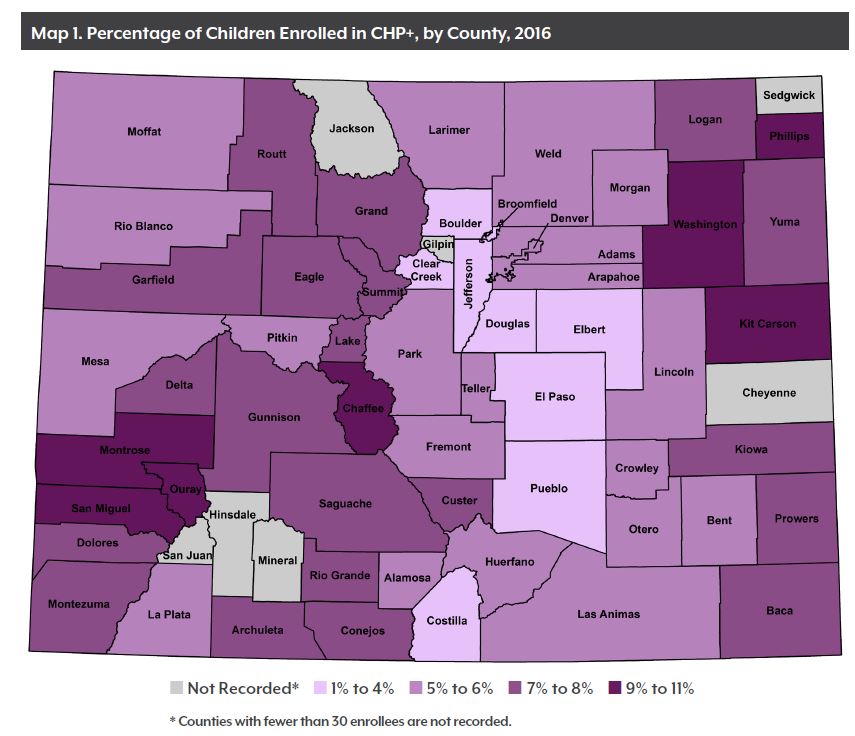
Zelene Nava relies on Child Health Plan Plus to have her four children covered by health insurance. The program’s funding expiration on Sept. 30 has left Nava feeling “very, very scared.” Photo by Joe Mahoney / Special to The Colorado Trust
Zelene Nava relies on Child Health Plan Plus to have her four children covered by health insurance. The program’s funding expiration on Sept. 30 has left Nava feeling “very, very scared.” Photo by Joe Mahoney / Special to The Colorado Trust
Colorado health advocates are mobilizing to respond this week after a triple-threat funding “cliff” technically ended vital programs in children’s health insurance, safety net clinics and provider-loan paybacks in underserved areas.
As one measure of the potential misery, the State of Colorado would be forced to send out letters around Christmas warning families to find new insurance early in 2018.
Congress failed to act before the Sept. 30 fiscal year-end deadline to renew Child Health Plan Plus (CHP+), among other longstanding health programs. As a result, 75,000 Colorado children from families with low incomes (among 9 million nationwide) could lose insurance by early next year. Nearly 800 pregnant women in Colorado are also covered by CHP+ at any given time—enrollments that have helped push the state uninsured rate to historic lows.
The uncertainty is a daily trial for single moms like Zelene Nava, who is raising four children on her own and works helping others enroll in Medicaid at Clinica Family Health’s People’s Medical Clinic in Boulder.
“I’m very, very scared,” said Nava, who can buy her own health insurance but needs help to afford a family plan. “It’s so expensive to do anything with health care. I pray that it doesn’t go away, because I don’t know what I’d do.”
Her kids use all the CHP+ services, from primary care to dental appointments to eyeglasses.
“I don’t want them to get sick and not be able to go to school,” Nava said. “I don’t want to quit my job in order to qualify for Medicaid. I don’t want to be a stressed-out mom that can’t provide health insurance for her kids.”
The funding cliff also threatens federal grants that play a key role in operations of community health clinics that serve CHP+ clients, Medicaid recipients and the uninsured, including Clinica’s network of clinics and many others. A separate program helping to repay the school loans of doctors and other providers who agree to work at safety net clinics also expired Saturday night.
Clinica’s large federal grant includes $6.2 million threatened by the funding cliff. Clinica’s grant schedule allows the money to go through January, and losing it would create an enormous hole, said Clinica Development Director Susan Wortman: “It’s fundamental to our being able to pay salaries, and continue to provide care to all patients. We took care of more than 50,000 patients last year, and that’s a sizeable percentage of our budget.”
A congressional committee may begin markup of a reauthorization bill for the programs as early as today, but given the gridlock on recent Beltway health coverage issues, advocates are piling on pressure to act.
“This is about the health and well-being of the patients, families and communities these programs help serve,” Polly Anderson, vice president of strategy and financing for the Colorado Community Health Network, the collection of 20 community clinics serving 700,000 state patients, said in a statement. Anderson said there were some encouraging signs of action, but that rescue legislation was a long way from final passage. “Never has the uncertainty of funding been so high or the impacts if the cliff is not fixed so deep.”
CHP+ serves a tier of Colorado families with low incomes, including a disproportionate number of people of color, according to estimates by the Colorado Health Institute (CHI), a Colorado Trust grantee. While the Hispanic population of Colorado is 21 percent overall, approximately 40 percent of CHP+ members in the state are Hispanic; while 10 percent of the population is non-Hispanic people of color, that group makes up about 17.5 percent of CHP+ membership.
Nationally, the Kaiser Family Foundation credits the child health plans and Medicaid for reducing “racial/ethnic disparities in children’s coverage. The children’s program and Medicaid cover more than half of Hispanic children (52%) and Black children (56%), compared to about one-quarter of White (26%) and Asian (25%) children.”
The CHP+ insurance plan, which is separate from Medicaid and the recent Medicaid expansion in Colorado, provides low- or no-cost insurance to children in families making 138 to 250 percent of the federal poverty level, or about $34,000 up to $61,000 a year for a family of four. (Colorado’s Medicaid program is now called Health First Colorado.) Those families make a little too much to qualify for the main Health First Colorado program, but do not make enough in most cases to pay for private insurance through the state exchange, even with a subsidy.
Any private insurance replacement would come with relatively high premiums, and very high deductibles, copays and out-of-pocket caps. Nor would there be any guarantees the CHP+ clients’ existing providers would be part of a private insurance network.
“These are working families,” said Jeff Bontrager, CHI’s director of research on coverage and access. CHI recently reported in its Trust-funded 2017 Colorado Health Access Survey that the uninsured level in Colorado has now fallen to about 6.5 percent, in part because of the Medicaid expansion and CHP+. The children’s program has been even more successful, dropping the uninsured rate in that age group to 3 percent in Colorado.
Longtime Colorado providers, such as Denver Health pediatrician Steven Federico, MD, note daily reminders of dramatic improvements in health access over 20 years of the CHP+ program. Children with asthma previously couldn’t afford regular checkups or their chronic-care medicine, Federico said.
“When you’d see that same child again in the emergency room, it breaks your heart,” Federico said. Denver Health has even made progress on addressing childhood obesity with the access to care and specialists that CHP+ brings, Federico said. “As a clinician, I see it every day.”
The CHP+ program costs the state budget about $128 million a year, according to CHI. State money for claims did not run out immediately on Sept. 30 because of variance in federal accounting rules, and because of the way Colorado set up its CHP+ plan, it has money to spend on the program until the end of January if no other action is taken.
The necessary Christmas timing of “letters of notice” would of course be awful, said Marc Williams of the Colorado Department of Health Care Policy and Financing (HCPF), which oversees Health First Colorado. With no control over what Congress does, state officials are trying to get information and alternatives to thousands of client families.
Health First Colorado has an advisory council of families using Medicaid and CHP+, Williams said. “They are scared and anxious,” he said. The council’s top priorities are getting information fast, and trying to find continuity of care with current providers. In the meantime, HCPF is encouraging CHP+ families to continue using their benefits as they have been.
Connect for Health Colorado, the state insurance exchange that is the only place to qualify for federal premium subsidies, wants to assist CHP+ families should the funding impasse continue. The Trump Administration, however, has cut funding for public outreach about health insurance that previously took place under the Affordable Care Act, leaving a potentially large gap in communication.
Colorado’s spending is more than matched with federal dollars, which supply nearly 90 percent of the cost of CHP+—meaning hundreds of millions of dollars more for the state health care system. The Denver Post reported that both of Colorado’s U.S. Senators had called for quick reauthorization of the program.
Nava said the clients she works with at Clinica are not yet asking questions about the potential loss of CHP+. Most are just focused on everyday work and support challenges.
Nava knows from her work in insurance that a loss of CHP+ would present challenges that go beyond just health care access and coverage. If clients couldn’t afford private insurance following a CHP+ expiration, many would instead pay sliding-scale fees at safety net clinics. That might flag them for a separate penalty from the IRS for lack of adequate health insurance, Nava noted.
Even for clients with CHP+, Nava said, “sometimes it’s even hard for them to pay their copays. It’s a burden on them to feel so stressed out about how to provide health insurance for their children.”
As for her own family, Nava tries not to imagine her active kids without that safety net. CHP+ covered one son who broke a hip bone running into a soccer goalpost. Without the child’s health insurance program, Nava said, “I’d probably be in debt right now.”

Child Health Plan Plus enrollment varies widely across Colorado, with rural counties typically having higher percentages of children covered under the program.
Source: Colorado Health Institute